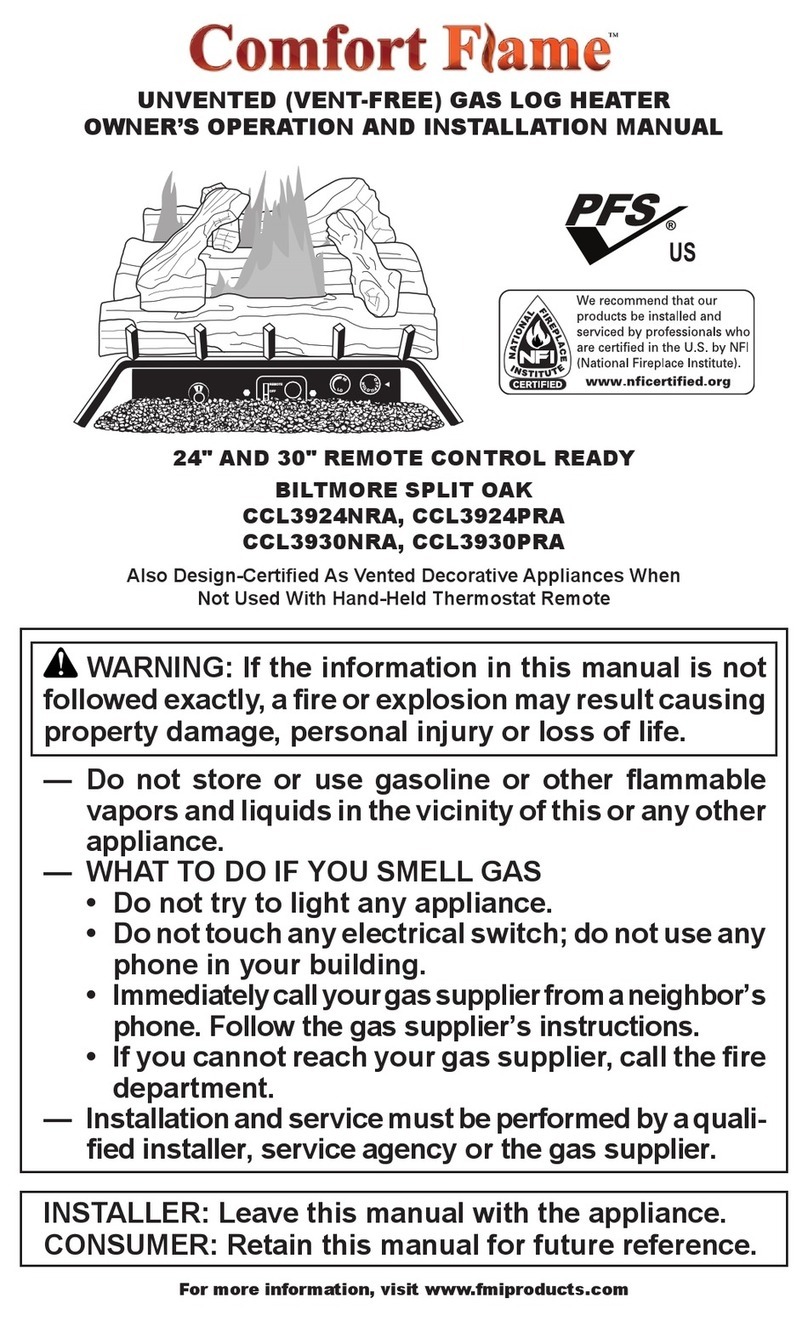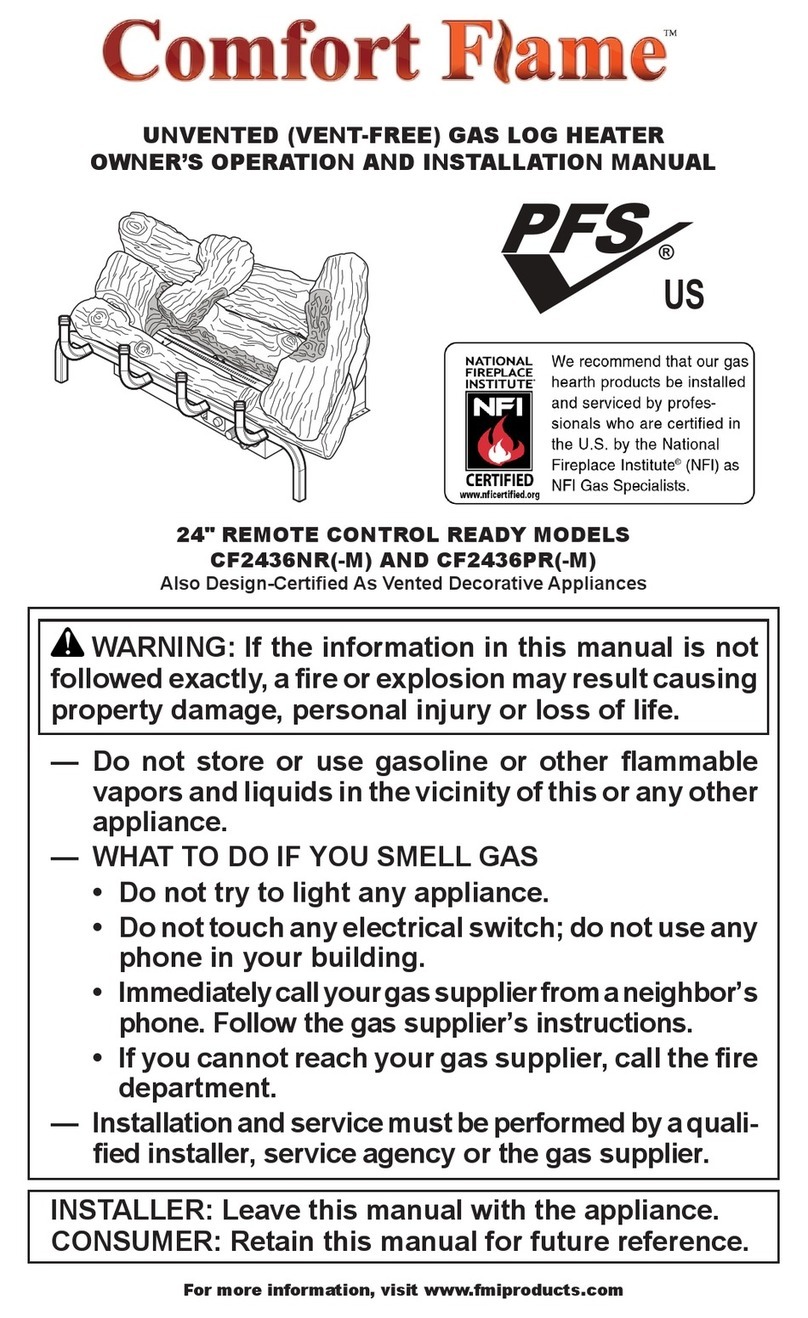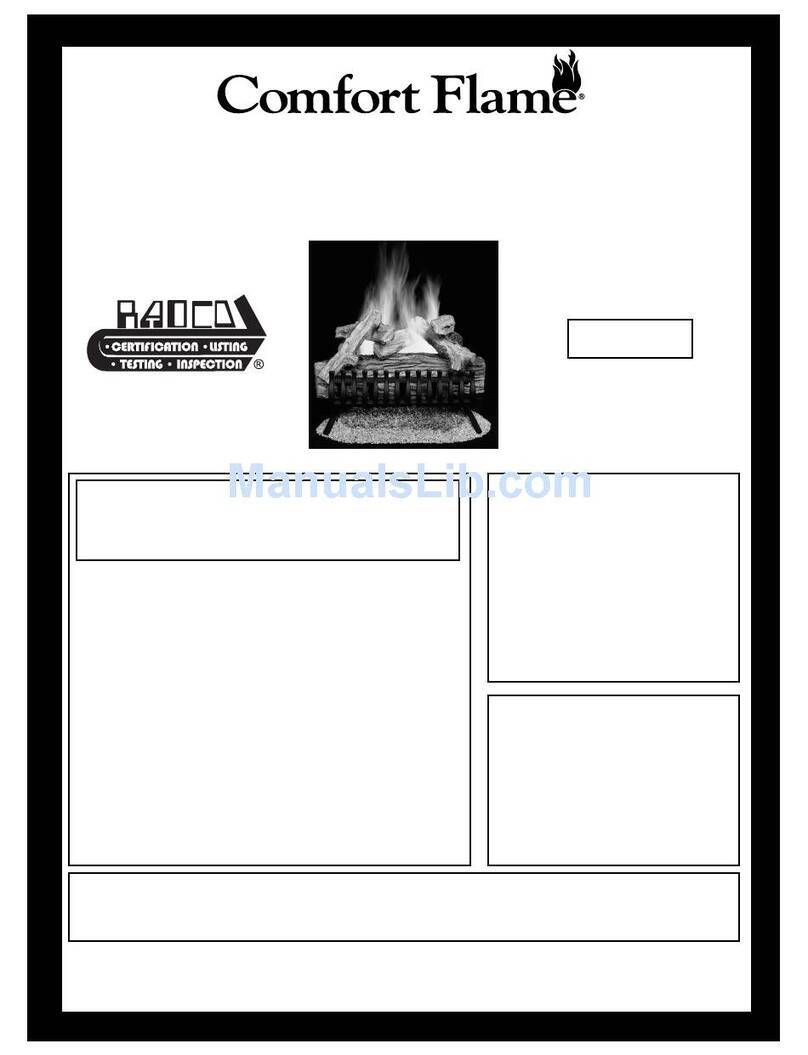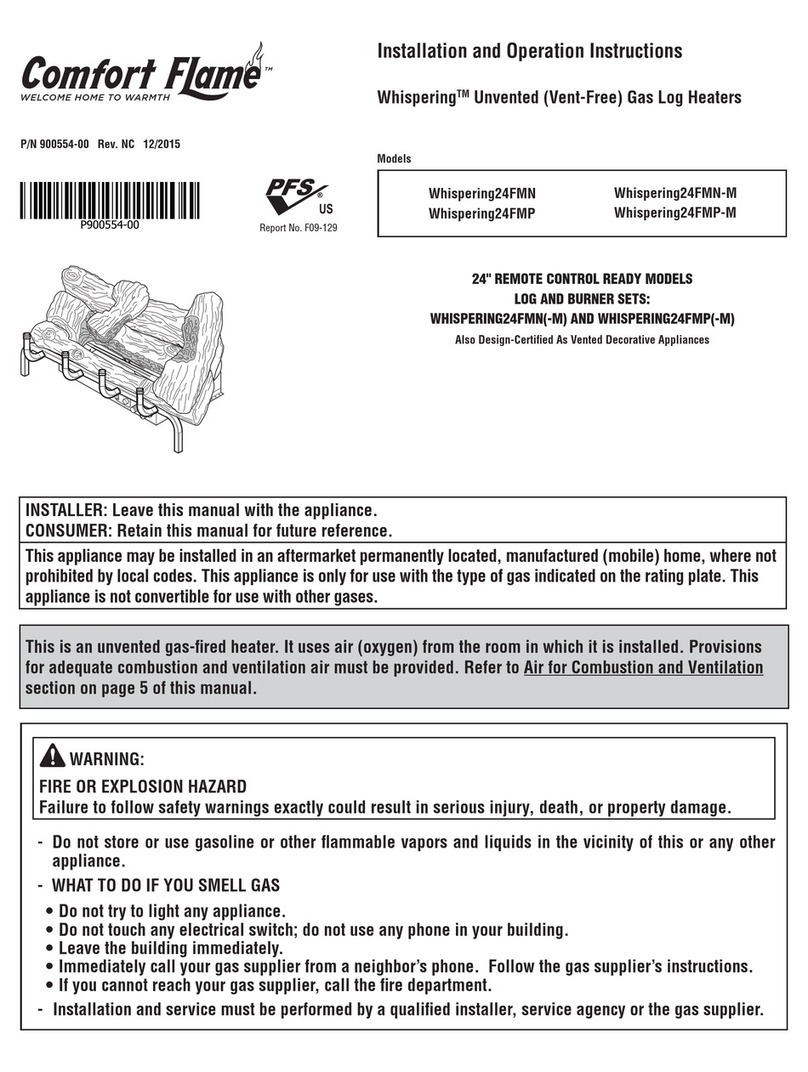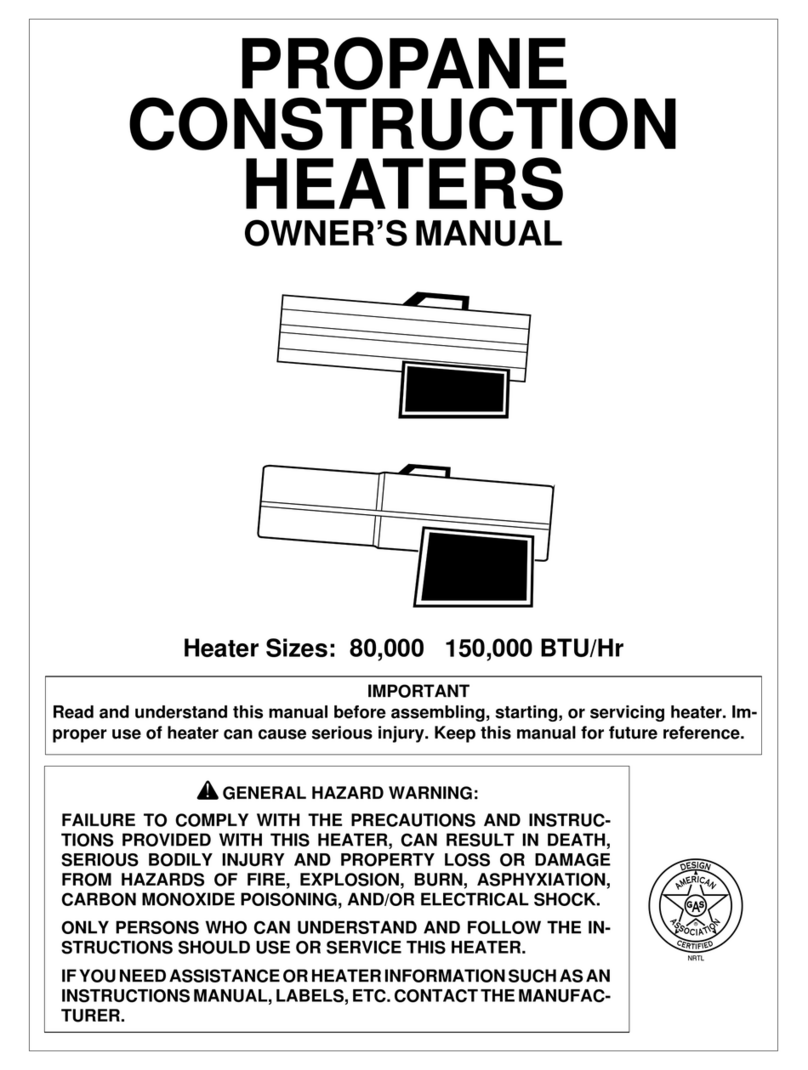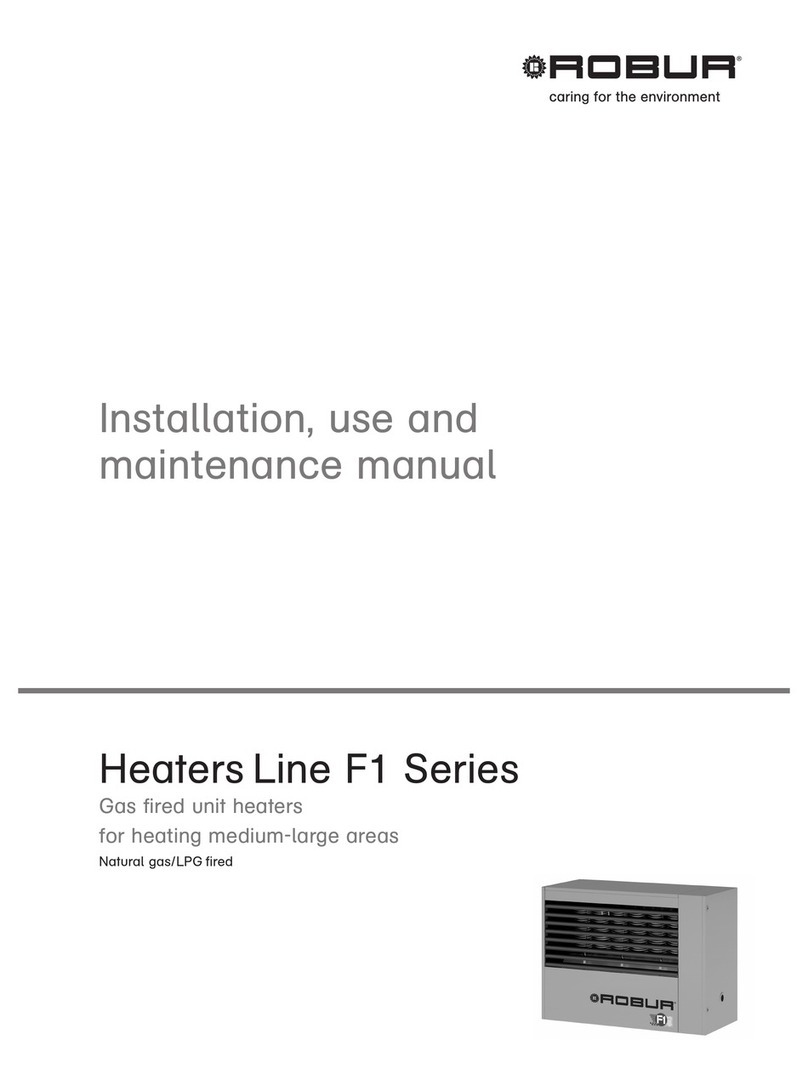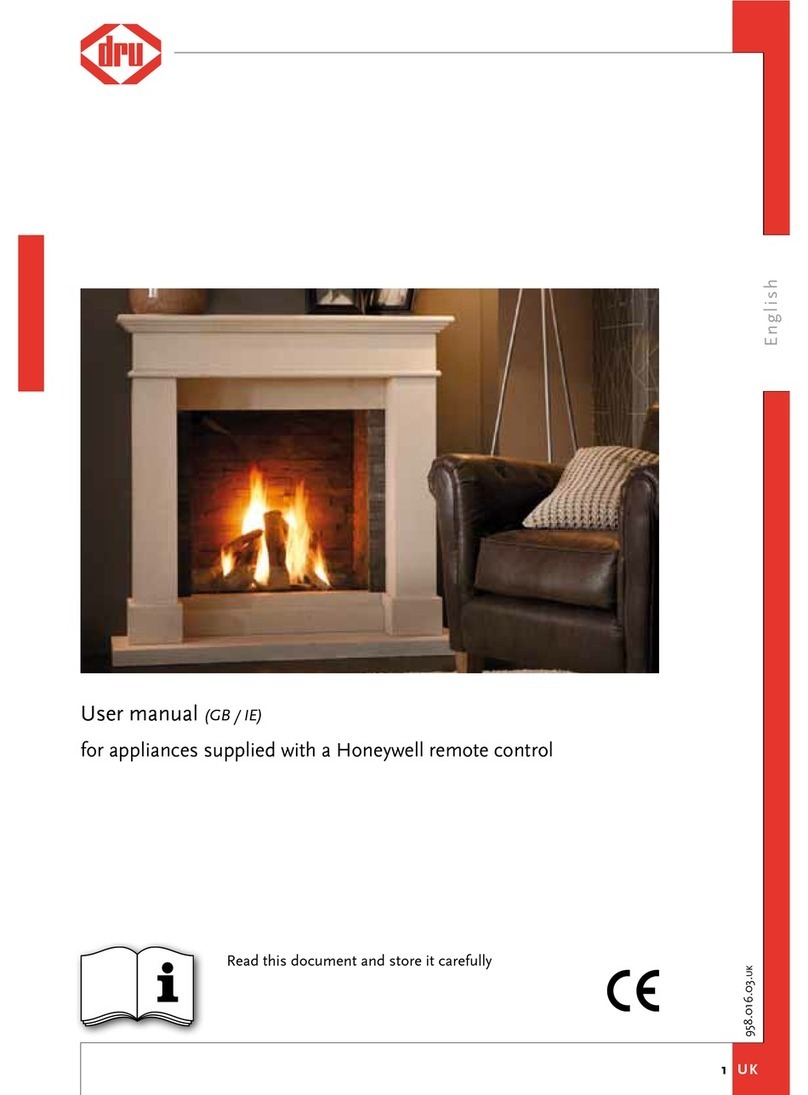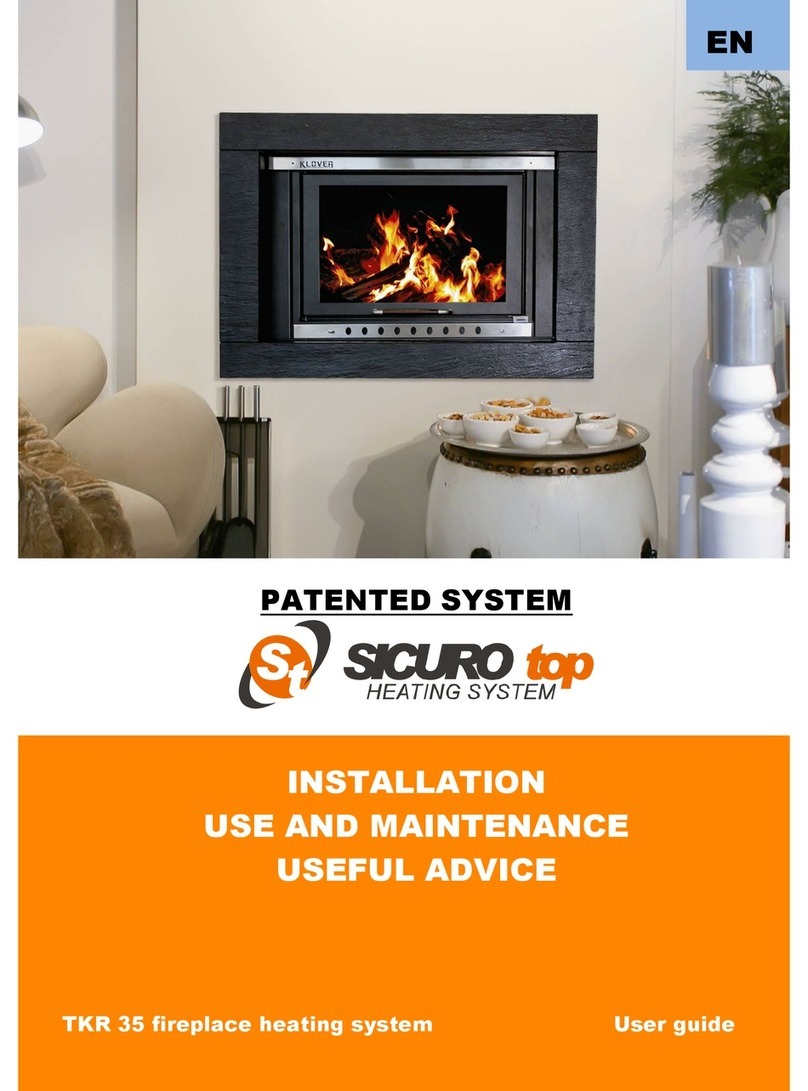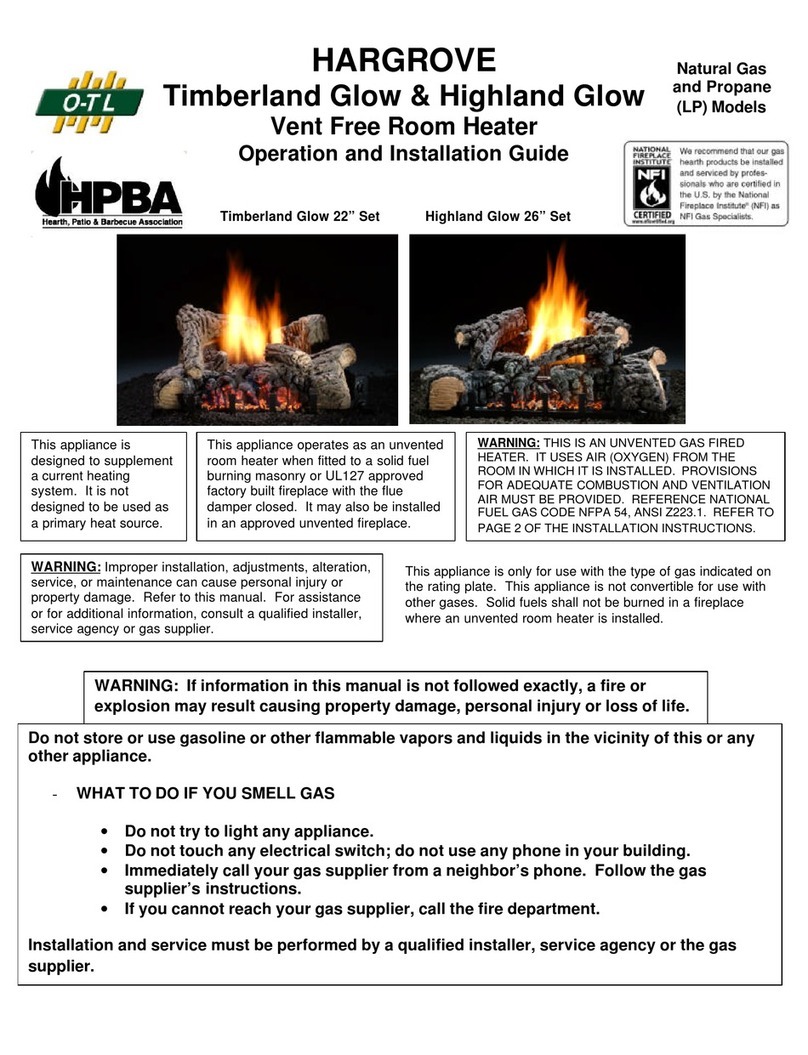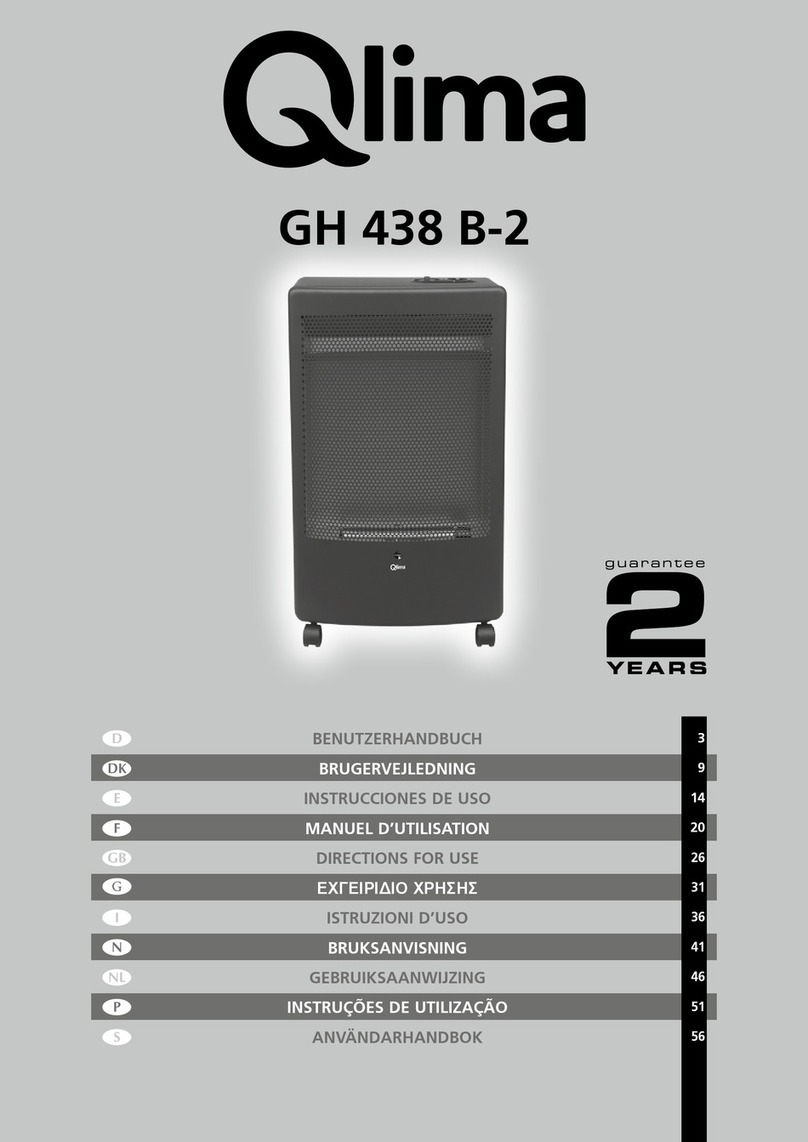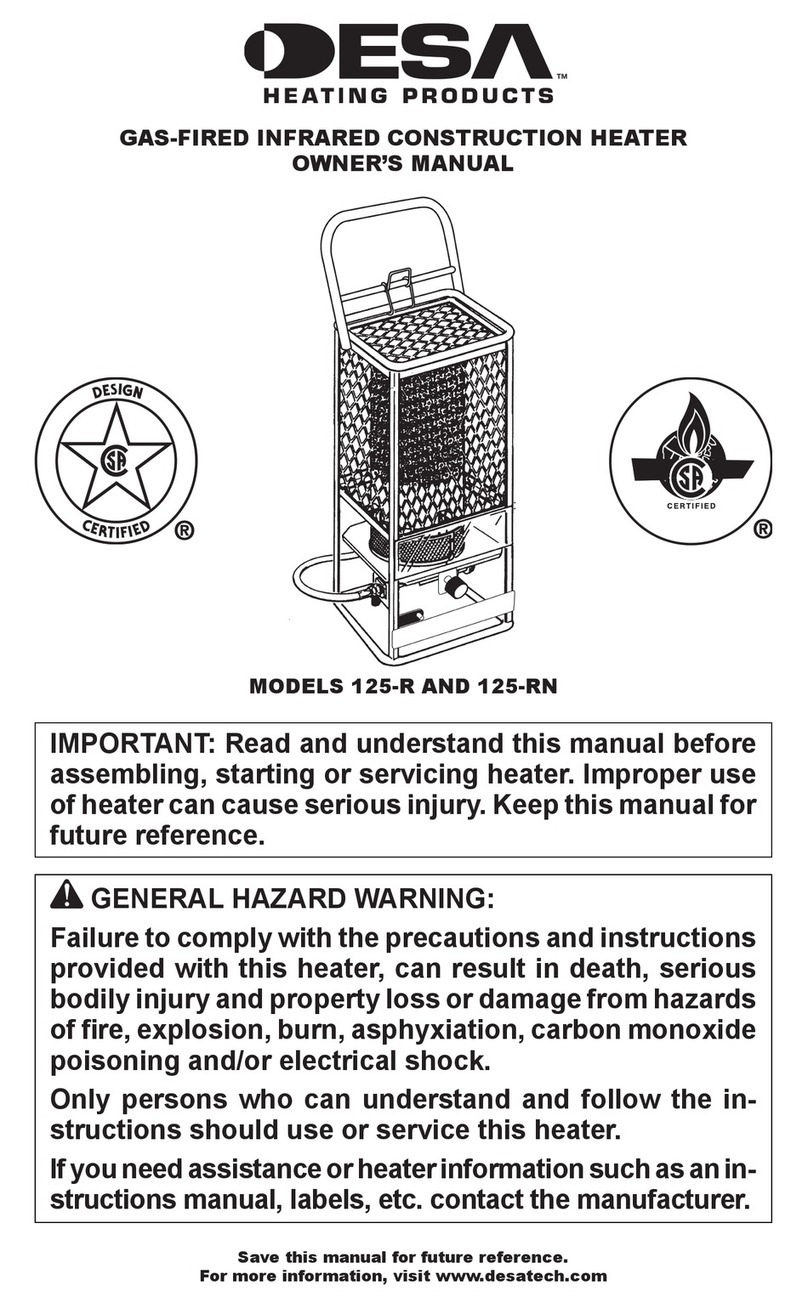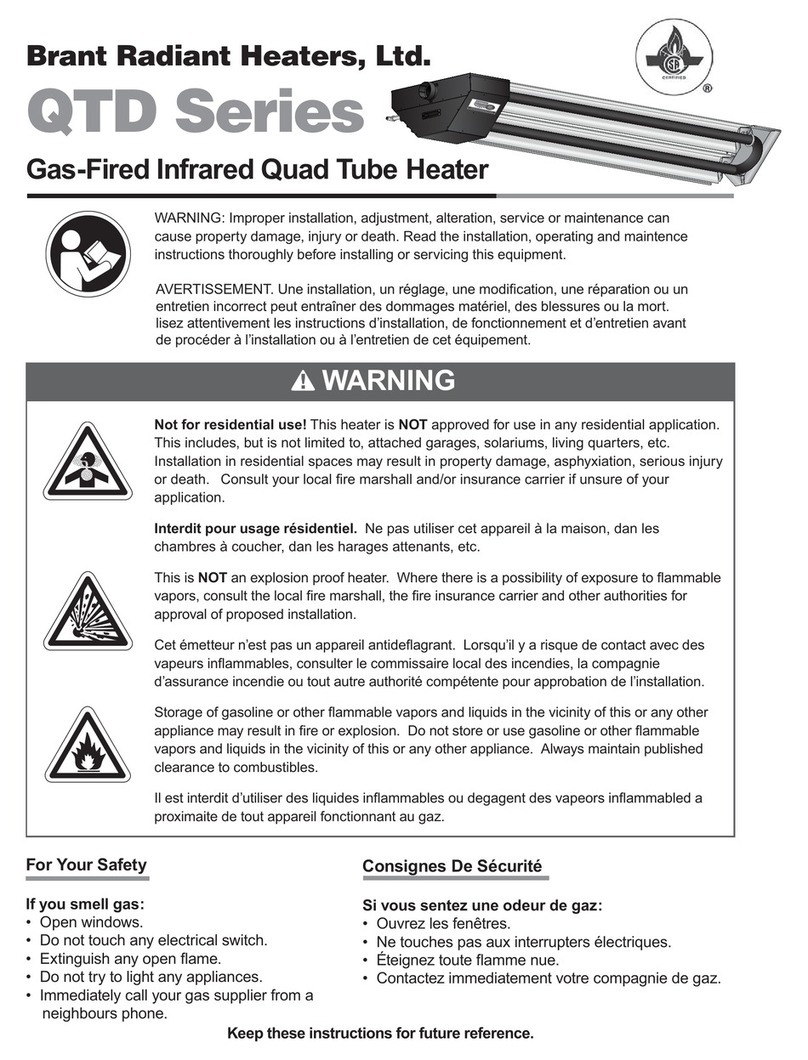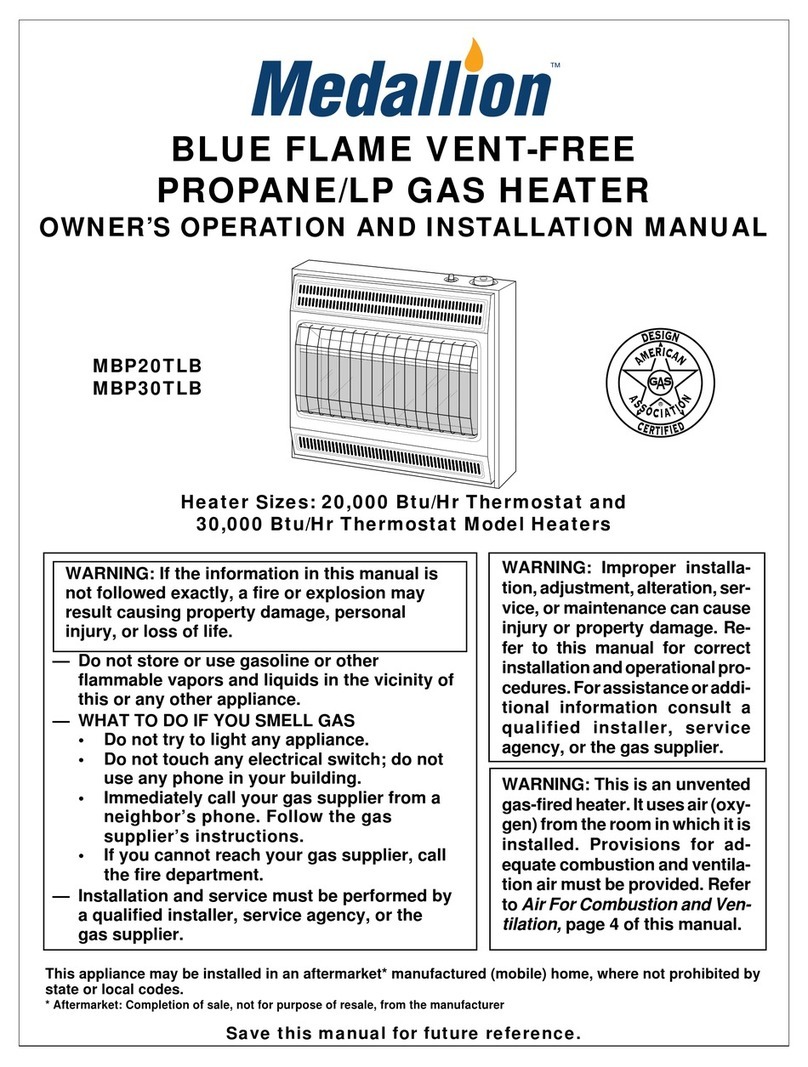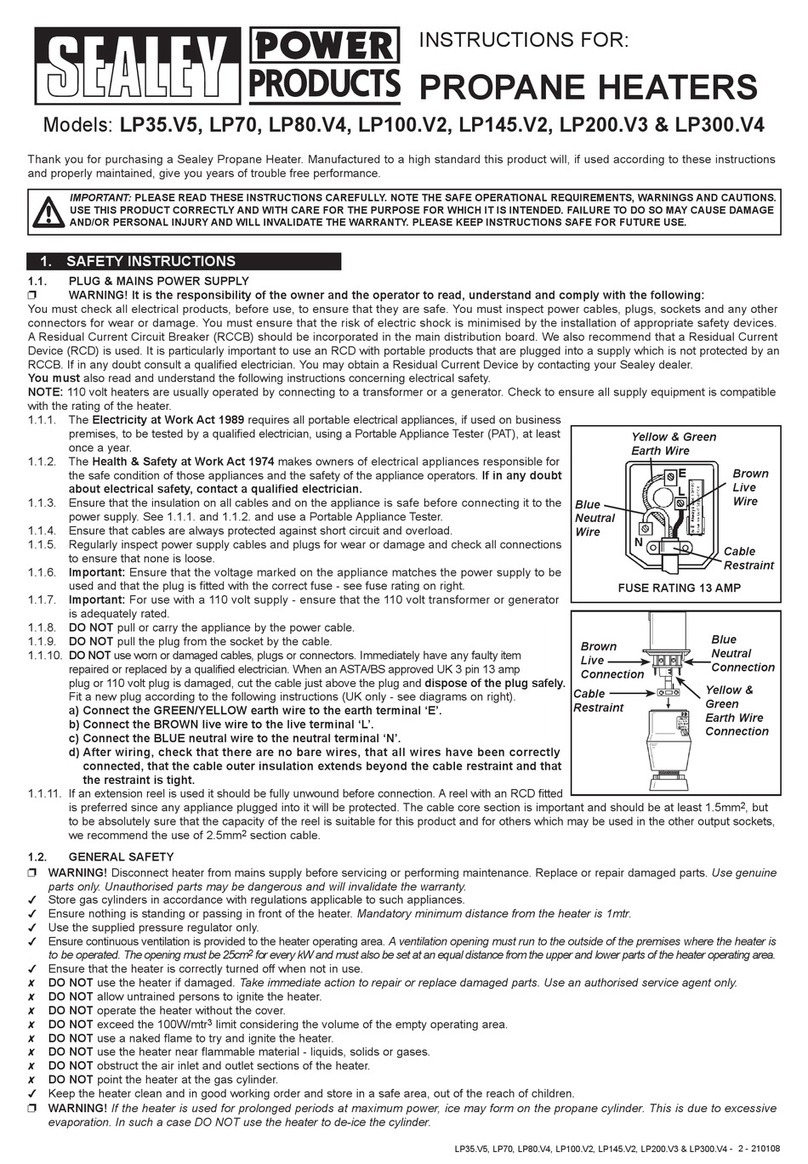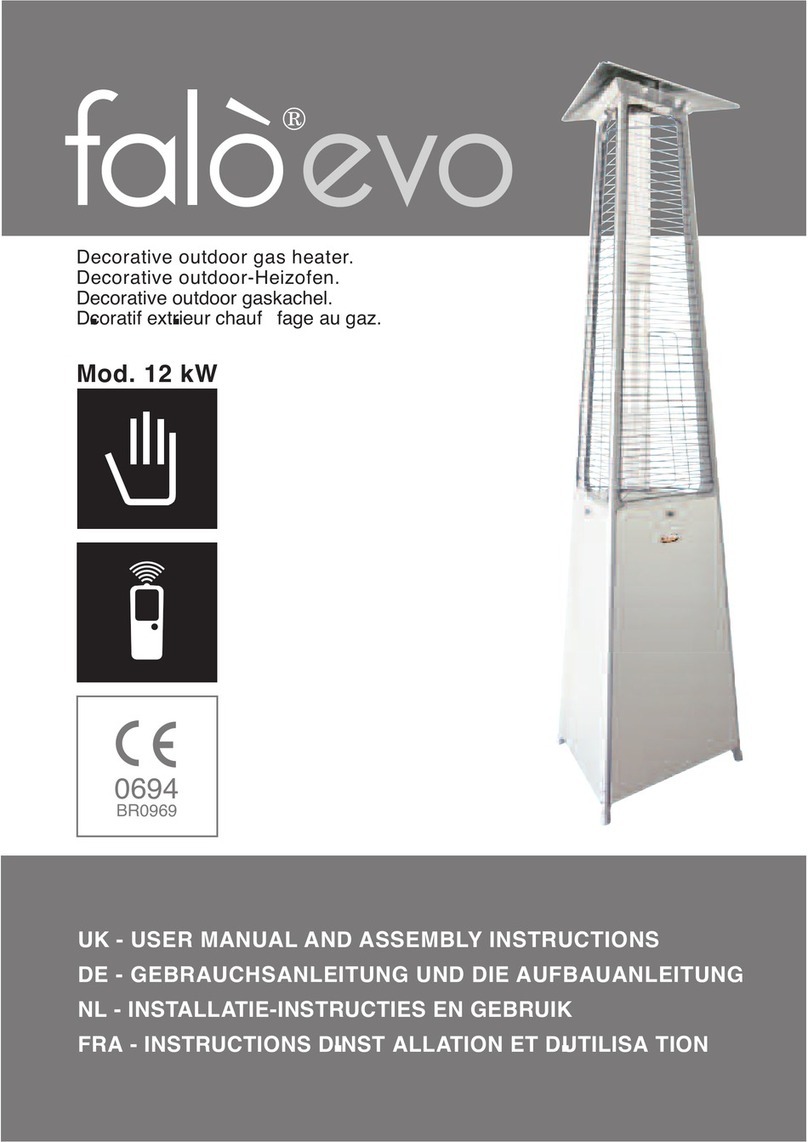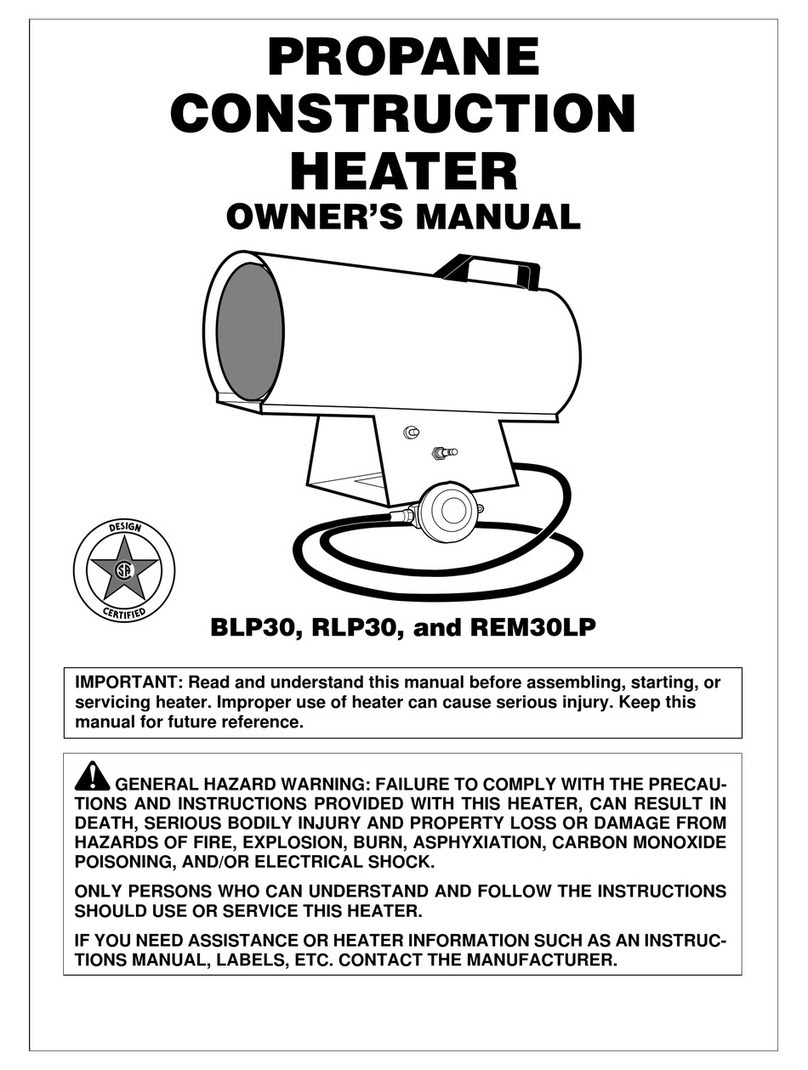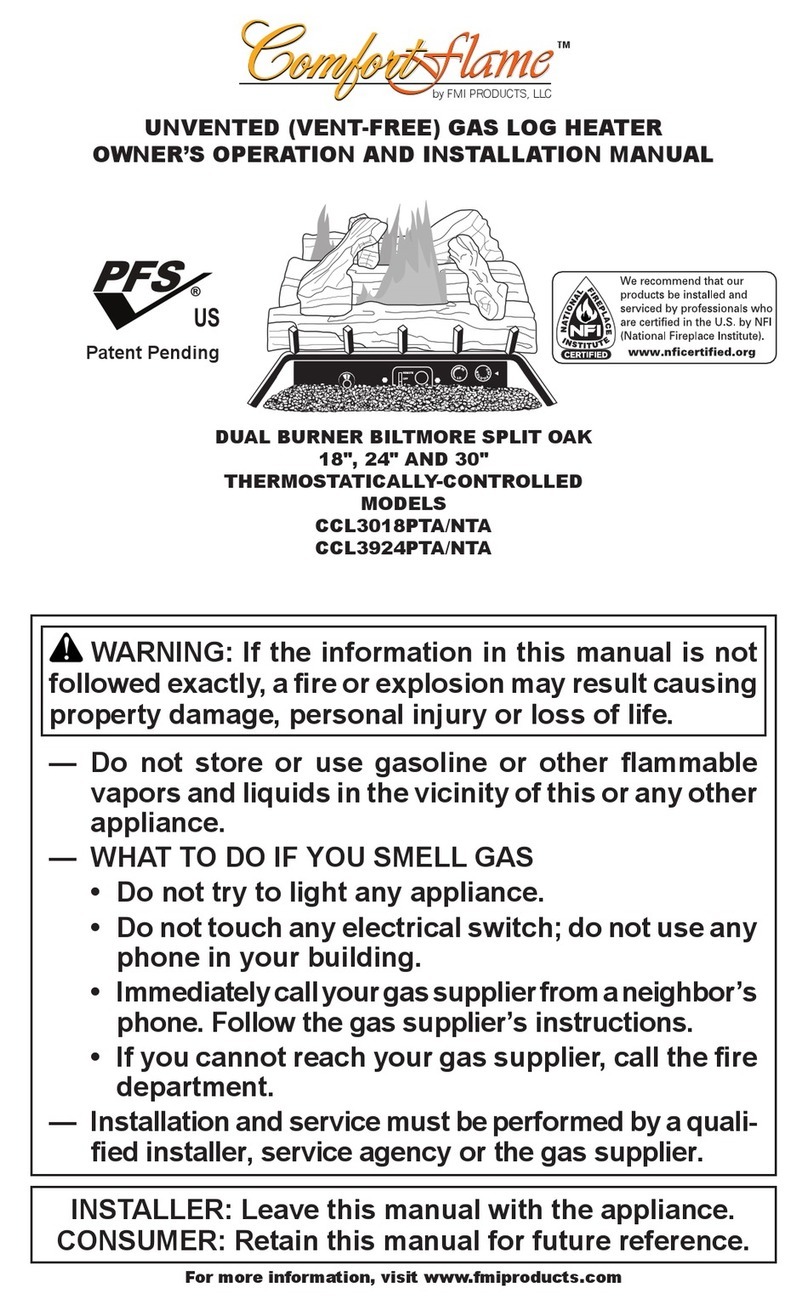
ComfortFlame.US.com900556-00 NC 5
PRODUCT FEATURES
OPERATION
This heater is clean burning. It requires no outside venting. There is
no heat loss out a vent or up a chimney. Heat is generated by realistic
dancing, yellow flames. This heater is designed for vent-free opera-
tion with flue damper closed. It has been tested and approved to the
ANSI Z21.11.2 standard for unvented heaters. This heater may also
be operated as a vented decorative (ANSI Z21.60) product by opening
flue damper (non-thermostat models only).
SAFETY PILOT
This heater has a pilot with an Oxygen Depletion Sensing (ODS)
safety shutoff system. The ODS/pilot is a required feature for vent-
free room heaters. The ODS/pilot shuts off the heater if there is not
enough fresh air.
PIEZO IGNITION SYSTEM
This heater has a piezo Igniter. This system requires no matches,
batteries or other sources to light heater.
REMOTE CONTROL ACCESSORIES
There are 2 optional remote controls that can be purchased separately
for this log heater:
• hand-held ON/OFF remote
• hand-held thermostat remote
See Accessories, page 24.
The hand-held thermostat may not be used where vented decorative
listing is required.
Today’s homes are built more energy efficient than ever. New materials,
increased insulation and new construction methods help reduce heat loss
in homes. Homeowners apply weather strip and caulk around windows and
doors to keep the cold air out and the warm air in. During heating months,
homeowners want their homes as airtight as possible.
While it is good to make your home energy efficient, your home needs
to breathe. Fresh air must enter your home. All fuel-burning appliances
need fresh air for proper combustion and ventilation.
Exhaust fans, some fireplaces, clothes dryers and some fuel-burning ap-
pliances draw air from the house to operate. You must provide adequate
fresh air for these appliances. That will ensure proper venting of vented
fuel-burning appliances.
PROVIDING ADEQUATE VENTILATION
The following are excerpts from National Fuel Gas Code, ANSI Z223.1/
NFPA 54, Air for Combustion and Ventilation.
All spaces in homes fall into one of the three following ventilation
classifications:
1. Unusually Tight Construction
2. Unconfined Space
3. Confined Space
The information on pages 5-7 will help you classify your space and
provide adequate ventilation.
Unusually Tight Construction
The air that leaks around doors and windows may provide enough
fresh air for combustion and ventilation. However, in buildings of
unusually tight construction, you must provide additional fresh air.
Unusually tight construction is defined as construction where:
a. walls and ceilings exposed to the outside atmosphere have a
continuous water vapor retarder with a rating of one perm (6 x
10-11 kg per pa-sec-m2) or less with openings gasketed or sealed
and
b. weather stripping has been added on openable windows and
doors and
c. caulking or sealants are applied to areas such as joints around
window and door frames, between sole plates and floors, be-
tween wall-ceiling joints, between wall panels, at penetrations
for plumbing, electrical and gas lines and at other openings.
If your home meets all three criteria above, you must provide ad-
ditional fresh air. See Ventilation Air From Outdoors, page 7.
If your home does not meet all three criteria above, proceed to De-
termining Fresh-Air Flow For Heater Location.
Confined Space and Unconfined Space
The National Fuel Gas Code, ANSI Z223.1/NFPA54 allows two meth-
ods for determining whether the space in which the heater is being
installed is confined or unconfined space. The standard method
defines a confined space as a space whose volume is less than 50
cubic feet per 1,000 Btu/hr (4.8 m3per kw) of the aggregate input
rating of all appliances installed in that space and an unconfined space
as a space whose volume is not less than 50 cubic feet per 1,000
Btu/hr (4.8 m3per kw) of the aggregate input rating of all appliances
installed in that space. Rooms communicating directly with the space
in which the appliances are installed*, through openings not furnished
with doors, are considered a part of the unconfined space.
Where the air infiltration rate of a structure is known, the Known Air
Infiltration Rate Method may be used. Follow The National Fuel Gas
Code, ANSI Z223.1/NFPA 54 to use this method to determine if the
space is confined or unconfined.
* Adjoining rooms are communicating only if there are doorless
passageways or ventilation grills between them.
AIR FOR COMBUSTION AND VENTILATION
WARNING: This heater shall not be installed in a
room or space unless the required volume of indoor
combustion air is provided by the method described
in the National Fuel Gas Code, ANSI Z223.1/NFPA 54,
the International Fuel Gas Code, or applicable local
codes.Read thefollowing instructionsto ensureproper
fresh air for this and other fuel-burning appliances in
your home.
